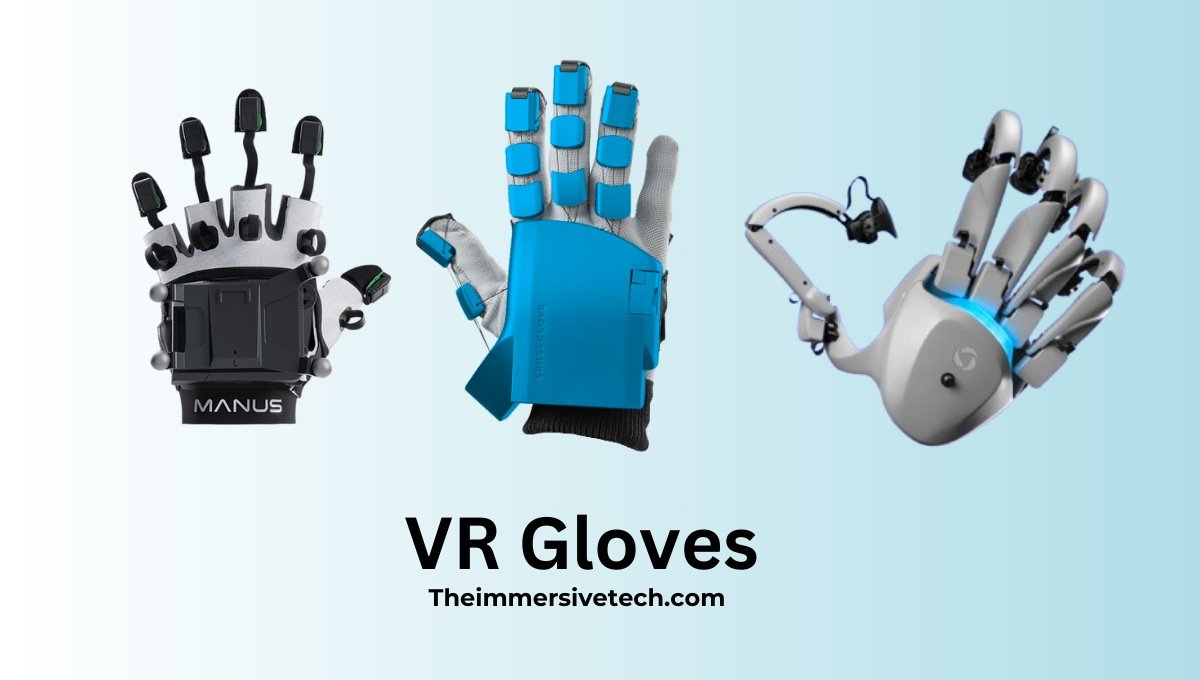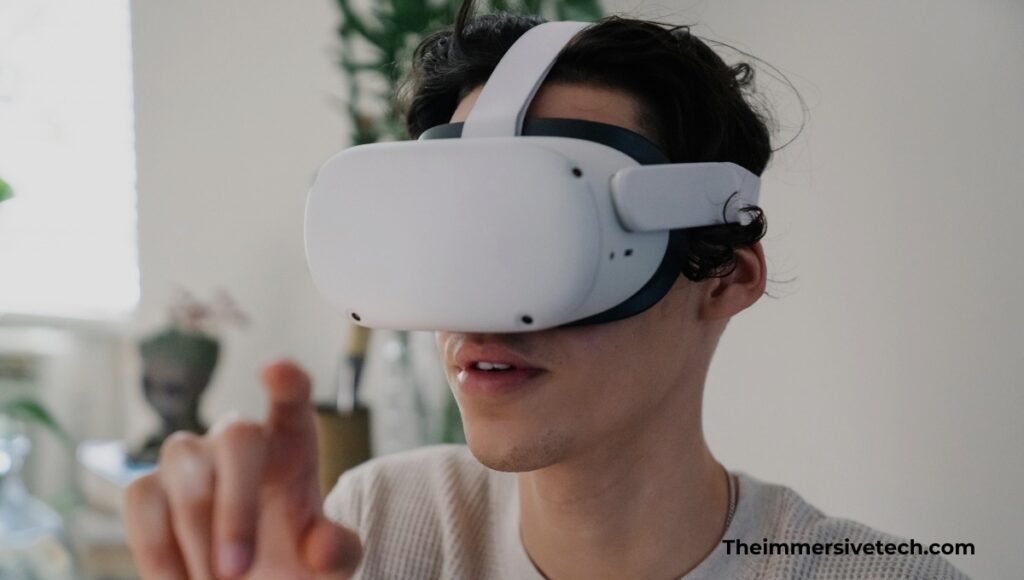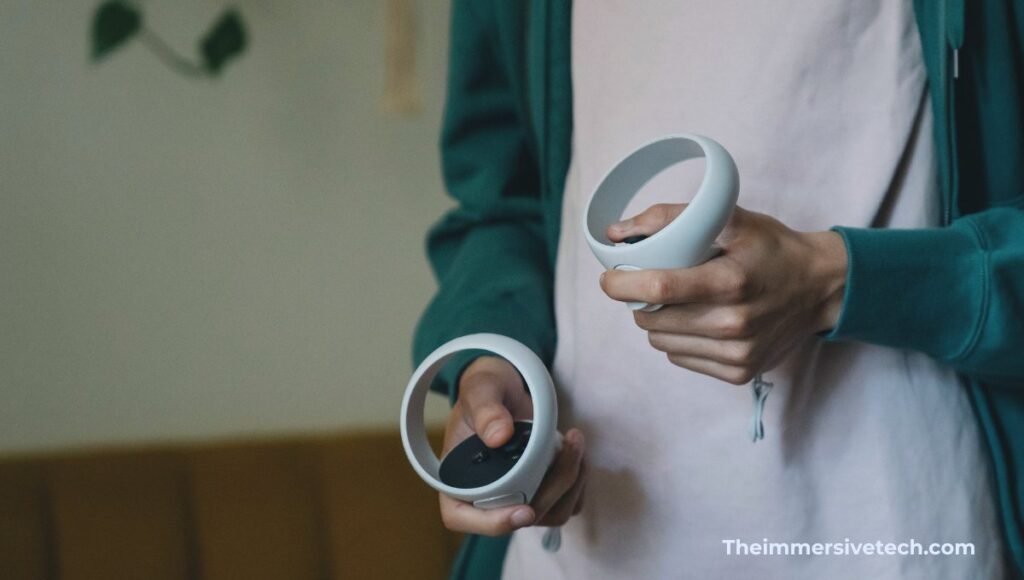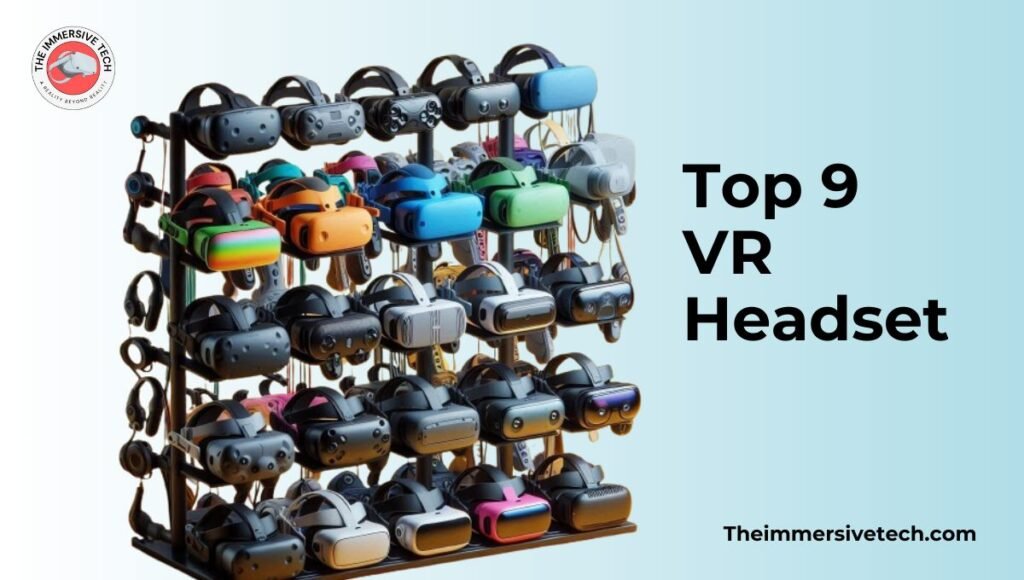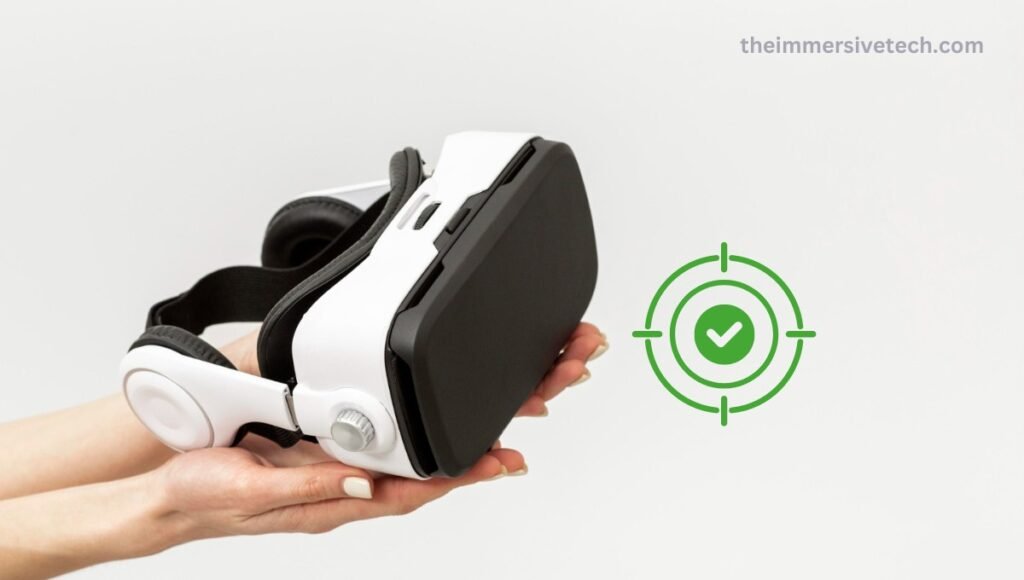Virtual reality is rising in the B2B industry, with its use being in various applications and sectors. Enterprises are using VR technology in countless ways. One main equipment that is used in big companies is VR gloves.
In this article, we will share about Virtual Reality gloves, how they work, and the best VR gloves you can get for your enterprise.
What Are VR Gloves?
VR gloves are a type of wearable technology gloves that are designed with haptic technology. These are specifically made to immerse the user in a virtual experience in the most realistic and natural way. The use of haptic technology in these gloves allows users to interact with virtual objects.
Some of the features that these gloves include are:
- Hand-tracking feedback: Allows users to see their hand movements in a virtual environment.
- Vibrotactile feedback: Allows users to feel a range of sensations, from light touches to rough textures.
- Force feedback: The users get to feel the size and density of virtual objects.
- Contact feedback: The shape and surfaces of virtual objects can be felt.
- Temperature feedback: Lastly, temperature feedback allows the users to feel the temperature of virtual objects.
How Do They Work?
Different VR gloves work on the basis of different features that they have and the application for which they’re being used. For example, force feedback can allow the users to feel the size and density of virtual objects.
Meanwhile, vibrotactile feedback allows the users to feel sensations on their fingertips, such as impact simulations and realistic button clicks. This feedback is extremely important for VR training as it provides users with sensory cues and vibrations.
A good VR glove must have a low delay time so that the user can feel sensations at the most optimal level. Additionally, the glove must be lightweight and compact.
Also read: The working of virtual reality technology.
VR Controllers vs VR Gloves: What’s Better?
While VR gloves are meant to be worn on the user’s hands, VR controllers are much different. Let’s learn what each of them are used for, and what they’re unique for.
VR Controllers
At present, VR controllers are the most common tools to interact with the virtual world. Once you connect the VR controllers with the console and headset, they’re ready to be used. These controllers usually consist of buttons and touchpads.
Since they’re mainly used for gaming and entertainment purposes, there’s no need for realistic interactions. Most VR headsets that you’ll find will already include VR controllers with them.
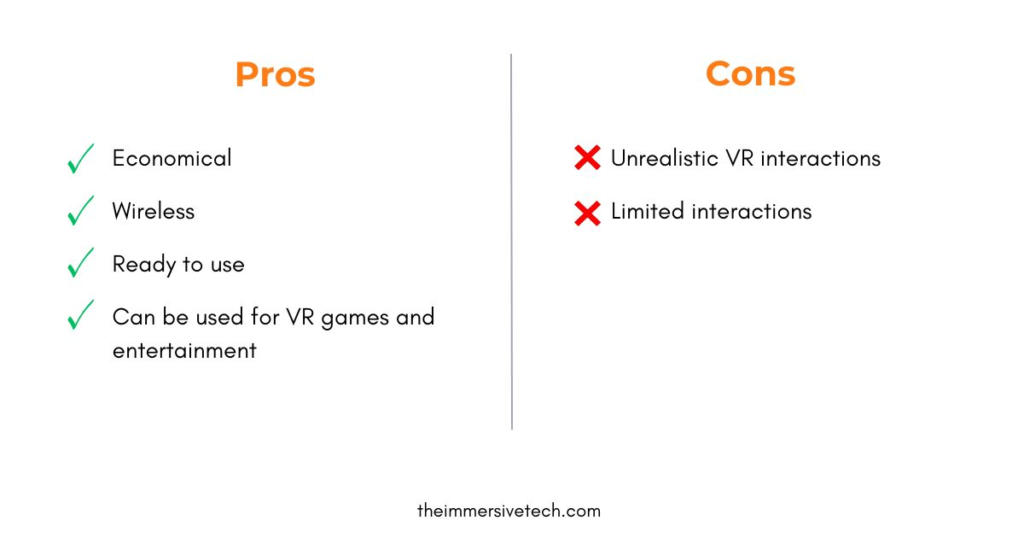
VR Gloves
VR gloves are wearable devices that allow users to have realistic interactions with the virtual world, unlike the controllers. These can be categorized based on several types: hand-tracking, vibrotactile feedback, force feedback, contact feedback, and temperature feedback gloves.
As these gloves allow for real-life movements and interactions, these gloves reinforce muscle memory and increase sensory feedback. Thus, creating a very “real” virtual reality experience — which is simply impossible with VR controllers.

Real-Life Applications of VR Gloves
VR gloves are used in various sectors and real-life applications. Here are some of these uses:
1. Maintenance and Security Training
Reputed electrical equipment suppliers often rent out low-to-medium voltage electrical gears that require periodic maintenance checks. So, the workforce of the customer organization must attend periodic training to learn the processes to perform maintenance activities.
In order to train themselves, the workers must travel to the training facilities and stay there for several days. However, a haptics training system could make all this complex process simpler by digitizing staff and security training.
2. Training in an Immersive Flight Simulator
This VR exercise is used to immerse students in a pilot training situation more realistically than a standard flight simulator. The learners wear their haptic gloves and VR headsets and sit in the pilot’s seat to perform the following tasks:
- Taking control of and operating the plane’s yoke
- Accelerate and decelerate the flight with the throttle
- Engage the cockpit’s buttons, knobs, and toggles
3. Assembling a Satellite Receiver
The military uses VR gloves in their Virtual Reality training while putting together satellite receivers. Ultimately, their goal is to avoid causing any expensive training equipment damage.
With the haptic gloves in a virtual environment, the trainees can install the virtual components of the satellite receiver as they would do with the actual hardware. There have only been positive results so far with the study.
4. Manufacturing Process Training
In the manufacturing industry, an apprenticeship is often followed by hands-on learning that helps students to put their learning into practice. Haptic gloves just add to the experience by giving the students a realistic warehouse setting to practice. One can practice the following procedures in the manufacturing industry:
- Print and apply box labels
- Learn to properly assemble the contents in the boxes
- Close the boxes and deliver to the next step
Read more: Practical Applicaiton of VR headsets
Top 6 VR Gloves in 2024
Here we have mentioned six of the best VR gloves to wear in 2024:
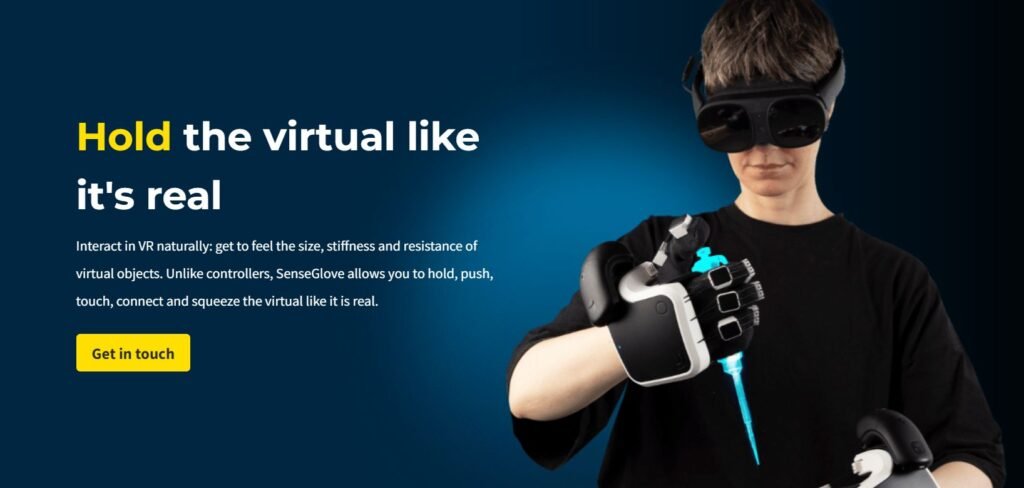
SenseGlove Nova is probably one of the best-known virtual reality gloves at the moment. These VR gloves have a sturdy force-feedback system that delivers 20 Newtons of resistance within 10 ms. Thus, making it possible for one to really feel the virtual objects.
Additionally, SenseGlove’s buttons feel very realistic to click and press. So, the user feels fully immersed into the virtual world. This feature is especially useful for VR training, as they require a dashboard or other tools which require the user to press buttons.
These VR gloves are compatible with numerous virtual reality glasses, such as the HTC Vive Pro 2 and Pico Neo 3 Pro. The SenseGlove VR gloves are widely used at large companies.
The Manus Prime is the lighter version of the SenseGlove Nova — with similar features. This glove has been designed while keeping VR training in mind. The Prime VR glove allows users to grip and hold virtual objects, feel different textures, and pull levers and push buttons in a realistic manner.
This haptic glove has one haptic module on each finger on the glove, ensuring that each finger can be controlled individually. These gloves are compatible with the most industry standard software platforms such as Unreal Engine and Unity. Thus, developers can make an application themselves in a simple way to use the Manus Prime glove.
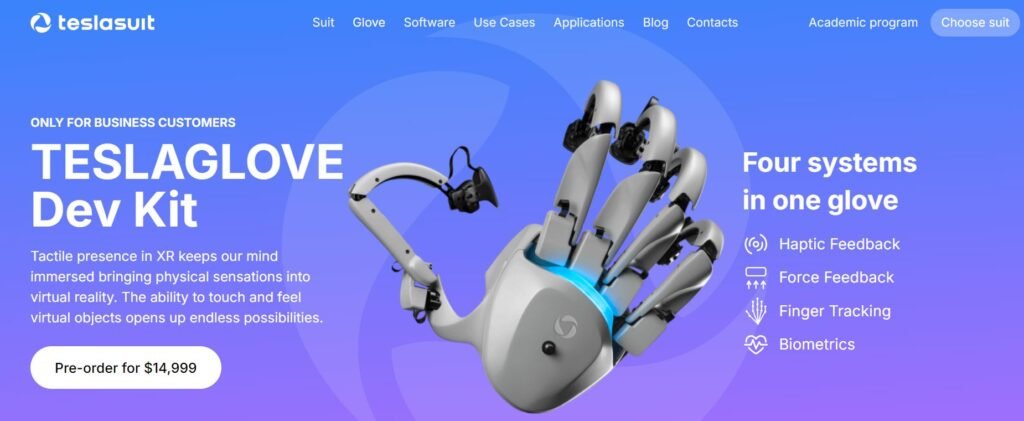
These TeslaGloves are an addition to the TeslaSuit. If you don’t know, TeslaSuit is a haptic suit that can be used for motion capture. This suit can also collect biometric data and thus, it’s really suitable for research and other applications where data analysis is required.
TeslaGloves are just an addition to this haptic suit. Having a lightweight design, these gloves form an exoskeleton around the hands of the user. When the user holds something in the virtual world, the gloves emit a light resistance, making it seem like the object has been physically picked up.
These gloves can be paired up with the TeslaSuit and can be linked to an HTC VIVE Tracker.
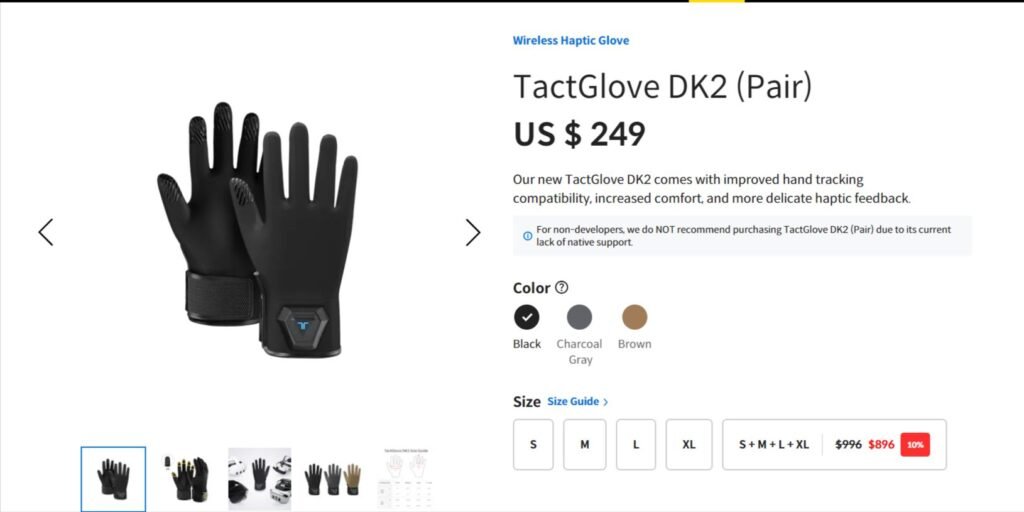
The TactGlove by bHaptics promises to be a good haptic glove which can also be used by consumers. It’s unique for the way it isn’t targeting the business market and realistic VR training, but the Consumers.
The glove looks like a simple black glove, but it has a haptic point built into the fingertips that can simulate the haptic feedback by vibrating. Another great point about this VR glove is that it can be combined with other VR products from bHaptics to bring your whole self into a virtual experience.
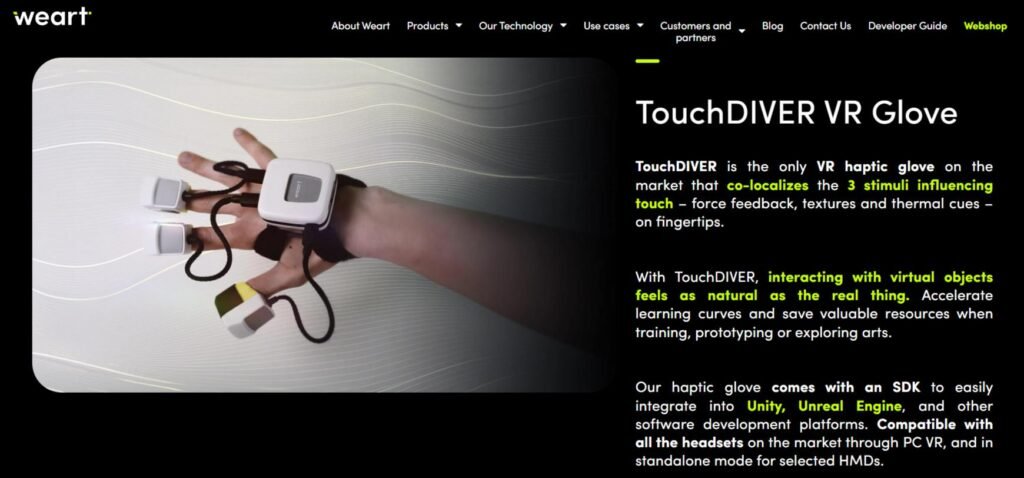
The WEAR haptic gloves cannot be truly called a ‘glove’, but they have various haptic sensors placed on the fingertips. In addition to the users being able to pick up virtual objects, these gloves also provide temperature feedback. Depending on what the user is touching in the virtual world, the fingertips may feel warm or cold.
For example, if you touch a cold metal plate, your fingertips will feel the coldness as if you are touching a real metal plate. But if you touch something hot, then you have to be careful as the fingertips can get really hot. Fortunately, the built-in temperature sensors never get hot enough to burn your fingers.
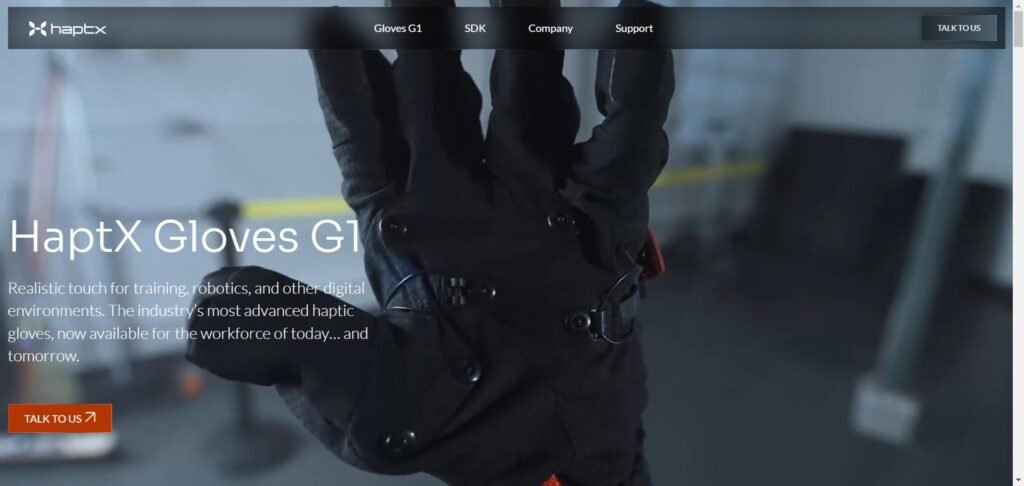
The HaptX Gloves look like a robotic arm in the first glance — even though, it’s not. These gloves go over the hand and wrist of the user as the design of this glove is comparatively larger than other VR gloves. But there’s a reason for it: the glove incorporates more haptic motors.
Despite HaptX Gloves losing their compactness, the gloves offer a much more realistic VR experience. It’s still a lightweight glove and delivers a minimum of 175 Newtons of pressure per hand. Moreover, a motion-capture system is built into these haptic gloves which follows the gloves with 30 degrees per hand, and without any delays.
Conclusion
The best VR gloves are lightweight, compact, and have a quick response time. If you are looking for haptic gloves, ensure that you get the ones that can fulfill your requirements — as each VR glove out there may not suit your requirements.
Read more: A complete guide on VR headset

